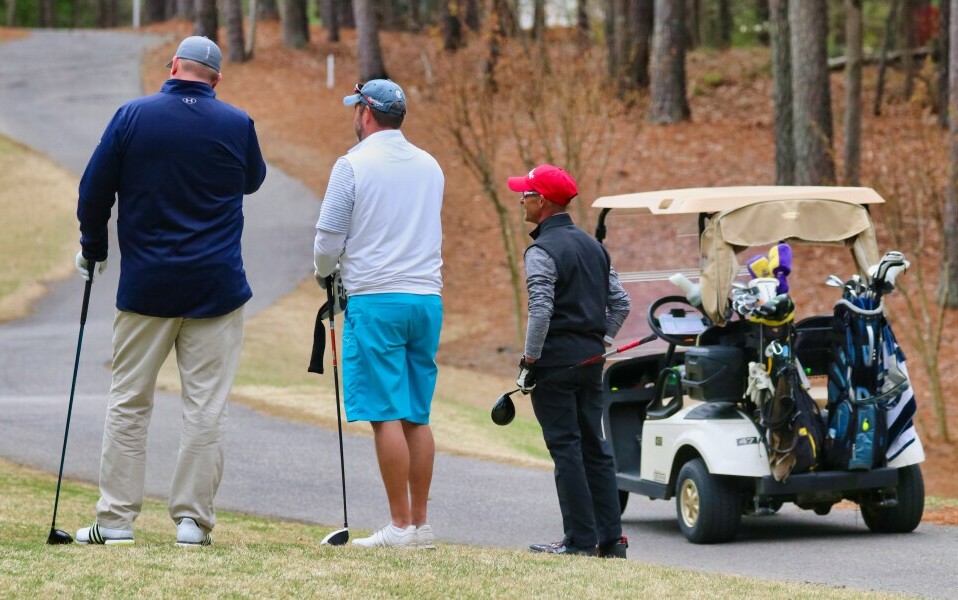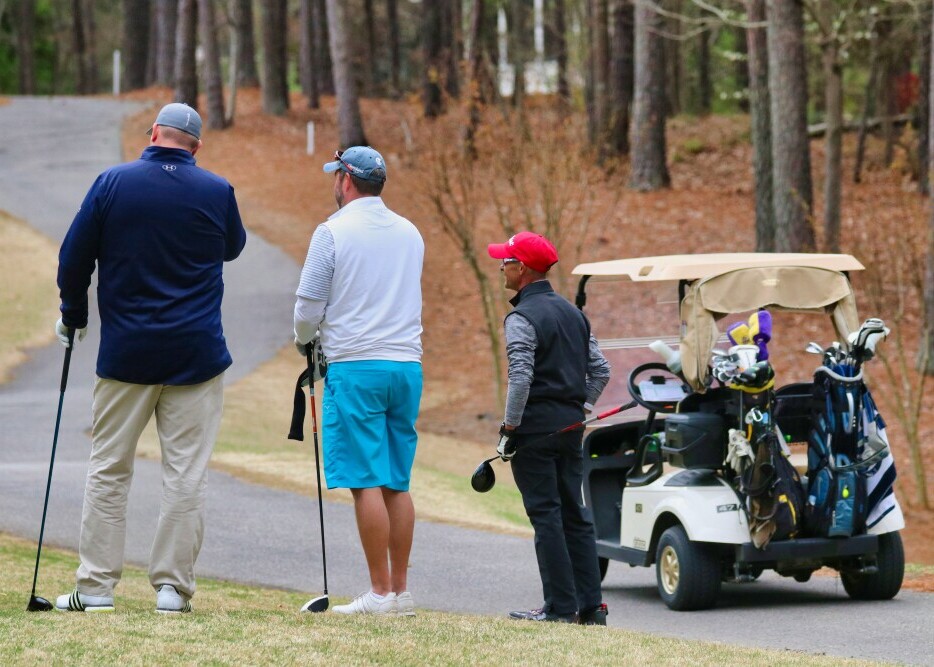What’s A Scramble In Golf?


A scramble in golf is a fun, team-based format that changes the typical solo game into a collaborative effort. It’s a type of tournament where each team member hits a tee shot, and the best shot is chosen. All team members then play their next shots from that spot, continuing this process until the hole is completed. This means everyone gets involved and has fun, regardless of skill level. The golf viking is back to help you understand what a scramble is and why you should consider joining. Let’s get started.
The history of the scramble format is a bit of a mixed bag. Some say it began in the early to mid-20th century as a way to make the game more inclusive and less intimidating for new players. The format gained traction, and today, scrambles are a staple in charity events, corporate outings, and friendly tournaments. It’s a crowd-pleaser because it keeps things moving and ensures every player has a shot at glory.
Scrambles have become super popular. They’re often the go-to choice for fundraising events, as they encourage participation and usually lead to some pretty incredible scores. The team aspect makes it less pressure-cooker intense and more about camaraderie and fun. Plus, who doesn’t like being part of a team that collectively nails a birdie? This format is also adored in corporate settings, where the focus is on networking and teamwork as much as it is on the golf.
In essence, the scramble format takes the stiff-upper-lip vibe out of golf. It offers everyone, from seasoned pros to total rookies, a chance to contribute. If a golf event feels like it might be too serious or intense, switching to a scramble can transform the day into a more relaxed and enjoyable experience for all. So how does all of this play out?
Scramble can be played alongside formats like stroke play in golf and match play in golf for fun or competition.
Ready to level up your golf game? Click here.

How Does a Scramble Work?
In a scramble, the essence is teamwork. The format starts with each player hitting a tee shot. The team then chooses the best shot collectively, and everyone plays their second shot from that position. This process continues until the ball is holed. It’s all about selecting the optimal shot to give the team the best chance of a low score. The beauty is that there’s no pressure on you to hit it perfectly every time. You just need to have one good hit out of everyone on your team.
The team usually consists of two to four players. Each member brings their unique skills to the table. A team might have a long hitter, a precise putter, and a player who’s solid in the mid-range game. The goal is to combine these strengths to create the best possible outcomes on each hole. So the best team may consist of players that have various skills sets on the course.
Strategy plays a massive role. Teams need to decide whose shot to use based on various factors like distance, lie, and hazards. If one player’s ball is in a prime position but another’s is slightly closer but stuck in a rough, the team must choose the better option. This decision-making process is part of what makes scrambles so enjoyable and challenging. It is a group decision so everyone can get a say in which ball they think is best situated.
Typical scramble scenarios include situations like needing a safe approach to avoid water hazards or deciding between a risky direct shot to the green versus a safer, longer route. Teams often find themselves in animated discussions over these choices, which adds to the fun and camaraderie.
Overall, scrambles require focus, collaboration, and a fair bit of strategic thinking. It’s not just about individual skill but how well the team can work together to navigate the course’s challenges. The format levels the playing field, making it perfect for diverse groups of players. This allows everyone to have fun as well as enjoy working together with a team. So, should you join in on the fun?
Knowing par and scoring is essential for team strategy. Review what’s a par in golf?

Should You Participate in a Scramble?
Joining a scramble can be a blast, especially for those new to golf or looking to enjoy a more relaxed atmosphere. It’s a great way to experience the game without the pressure of solo competition. Because the team collaborates and selects the best shots, players of all skill levels get to contribute, making it an inclusive option. If you are new to golf it can make a fun experience to keep your interest peaked.
There are numerous benefits to participating in a scramble. For starters, it’s social and fosters a sense of camaraderie. Imagine spending a whole day laughing and strategizing with friends or colleagues. It’s these shared experiences that make golf memorable. Plus, because the format levels the playing field, everyone gets a shot at hitting a great play, which keeps things super exciting.
Now, who is an ideal fit for a scramble? Pretty much anyone! Beginners can relax knowing they’re supported by their teammates, while more experienced players get the chance to showcase their strengths in different facets of the game. If you’re nervous about the competitive nature of traditional golf, a scramble is perfect for easing that anxiety.
However, there are some potential drawbacks. The casual vibe might not appeal to those who prefer intense competition. Also, managing diverse skill levels can sometimes slow down the game. But if everyone’s in it for fun, these issues are usually minor.
Consider some real-life testimonials. Many golfers rave about the scramble format, saying it’s their favorite way to play. They appreciate the reduced pressure, the team dynamic, and the overall fun factor. If you’re still on the fence, joining a casual scramble might just change your golf game for the better.
Short game skills matter for scrambles, especially around the green. See tips in short game mastery.

Rules and Team Dynamics in Scramble Golf
Understanding the rules of a scramble is straightforward but essential for smooth gameplay. The main rule is that each player hits a tee shot, after which the team selects the best one. From there, all players hit their next shots from that spot until the ball is holed. Most scrambles stick to this basic format, but there’s room for variation depending on the event or specific house rules.
Official rules often include stipulations like everyone having to contribute a certain number of tee shots. For instance, in a four-player team, each member might be required to use at least two of their drives over the course of the game. This ensures everyone gets involved and adds a layer of strategy to the mix.
The optimal team size generally falls between two to four players. Smaller teams can lead to tougher decisions and a greater emphasis on each shot, while larger teams benefit from a broader range of skills and more strategic options. It’s all about finding that sweet spot where team dynamics and individual skills blend perfectly.
Communication and strategy are vital in a scramble. Teams that talk through their options and make collective decisions usually perform better. Discussing the pros and cons of each potential shot, understanding each member’s strengths, and keeping spirits high are crucial aspects of effective teamwork.
Overall, scrambles are an excellent way to enjoy golf in a relaxed, team-oriented setting. They make the game accessible, engaging, and fun for everyone involved. Every golfer from rookie to veteran should try a scramble at least once. Give it a go, and you might find it’s your new favorite way to play.
Practice and teamwork can improve performance at a driving range.


